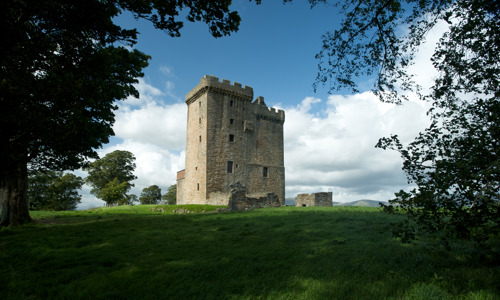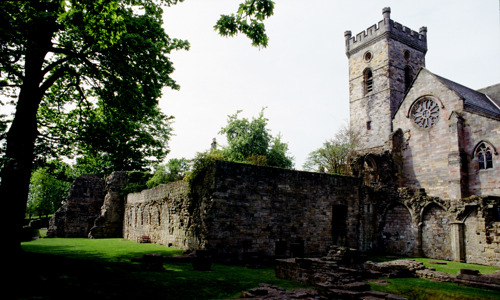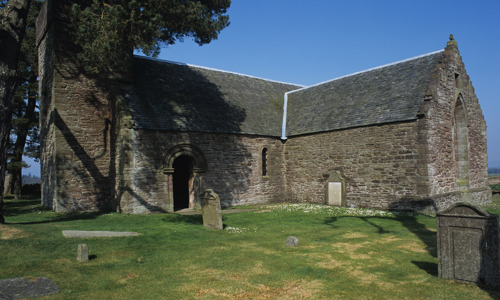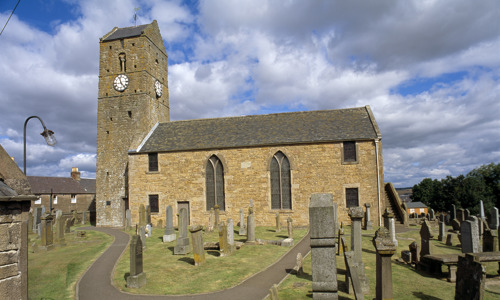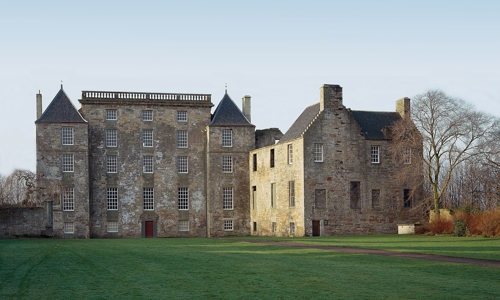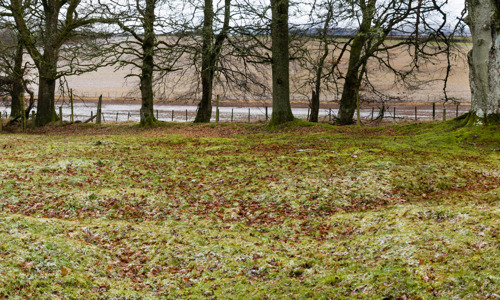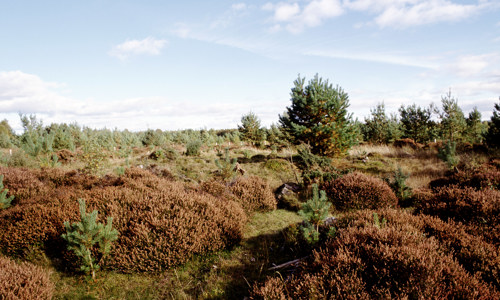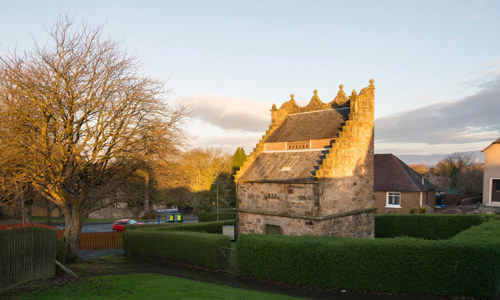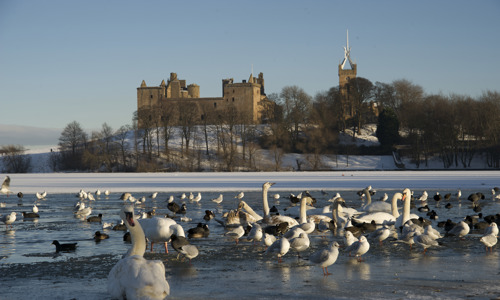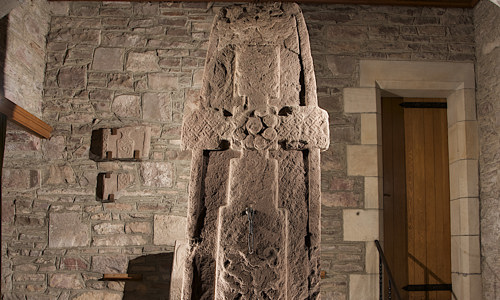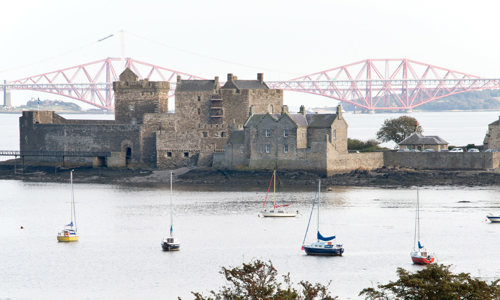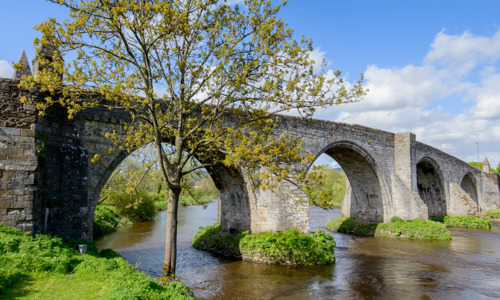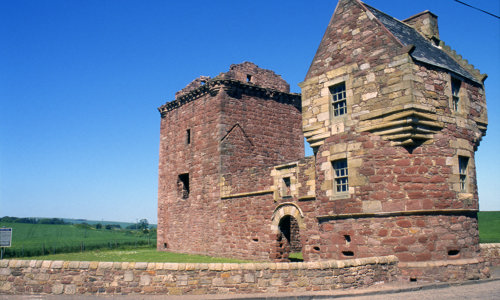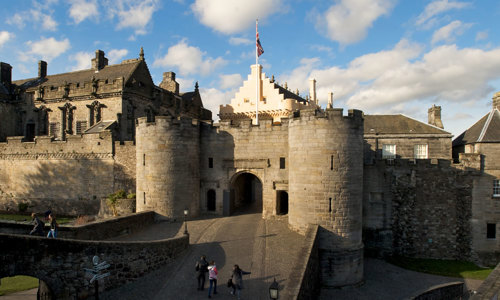History
Castle Campbell and its setting are full of drama. The imposing ruin stands alone upon a narrow ridge, overlooked by a crescent of the Ochil Hills. Steep ravines fall away on either side of the castle, through which thunder the Burn of Care and the Burn of Sorrow.
Originally known as Castle Glume, the stone fortress dates from the early 1400s. Around 1465, it passed through marriage to Colin Campbell, 1st Earl of Argyll. The powerful Highland chief needed a secure but impressive Lowland seat at the heart of the realm, within easy reach of the main centres of the royal court. Castle Glume fitted the bill perfectly.
The earl made the name change in 1489, and here the Campbells stayed for nearly 200 years. In the 1660s, the family made its main Lowland seat Argyll’s Lodging, a fine townhouse close to Stirling Castle.
A fine tower house castle
Castle Campbell is one of Scotland’s best-preserved tower house castles. The tower itself was the family residence and, at 20m tall, dominated the courtyard. Service access was at ground level, with the main entrance on the first floor, the norm at this time.
Inside were four floors of accommodation:
- a storage cellar at ground level
- a hall on the first floor
- private chambers on the two upper floors
The private chambers had been altered by around 1600. The fine vaulted ceiling at the top of the tower, which features two grotesque carvings representing the Green Man – was part of these renovations.
Across the courtyard, the Campbells added a two-storey range containing:
- a great hall (the main reception and banqueting suite), a withdrawing chamber and the court kitchen on the first floor
- vaulted storerooms below
This range looks remarkably similar to the royal lodging in Stirling Castle known as the King’s Old Building, built for James IV in the 1490s. The earl would have been a frequent visitor to the royal castle – and he clearly wanted to follow suit.
Friend or foe?
Among the many important visitors to Castle Campbell were:
- John Knox, the fiery Protestant preacher, in 1556
- Mary Queen of Scots in 1563
- the Marquis of Montrose, who laid waste to the surrounding land in 1645, on behalf of the beleaguered Charles I
- Cromwell’s lieutenant General Monck, who attacked the castle in 1654
The execution of the 8th Earl in 1661 effectively ended the castle’s days as a noble residence.
Natural history
A magnificent old sycamore called the Maiden Tree looms over the castle entrance. The origins of the name are lost to history, but local tradition claims a princess was once banished to ‘Castle Gloom’ for falling in love below her station.


